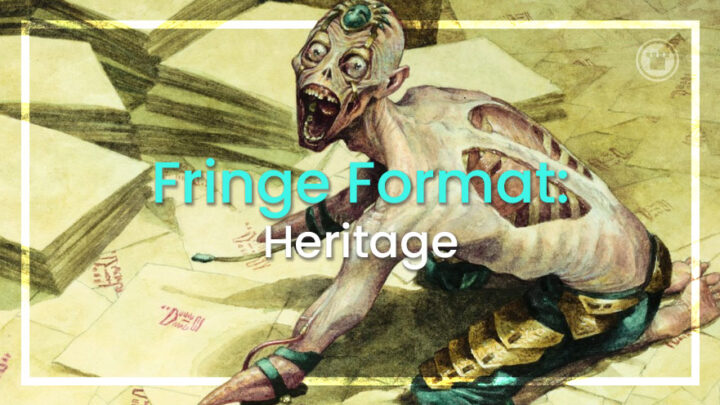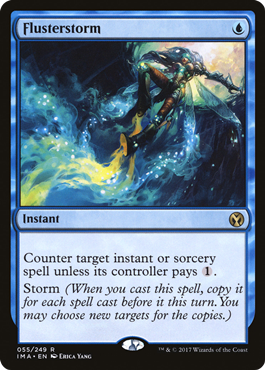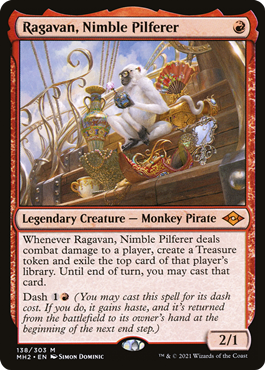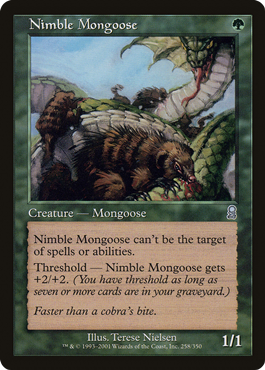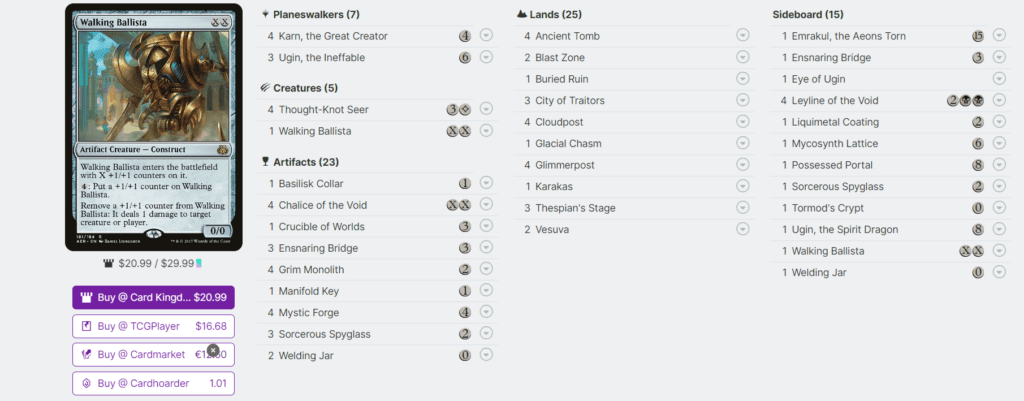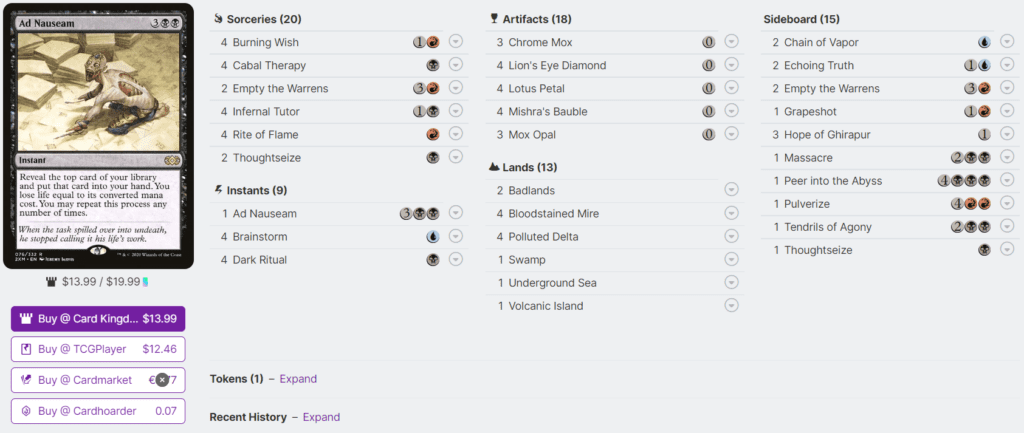Often here on Fringe Format, we’re covering ways of playing that have been around for a while, even if they haven’t received much attention outside a small circle of players. This time, we’re getting in on the ground floor with Heritage, a brand-new, community-driven Magic format that just had its first relatively major event this past weekend.
But before we get to the event, what exactly is Heritage?
A Simpler Time…line
There are a lot of formats out there that try to harken back to “the good old days” of Magic. Old-School (a.k.a. 94-95), Premodern, block-themed cubes, even older set drafts are all trying to recreate a card pool and evoke a specific era in MTG history.
Other fringe formats change something fundamental about the construction of the game while still using the core rules. Dandân uses a specifically constructed shared deck, Battlebox changes the way mana is distributed and any singleton format you can think of eschews normal (or, at least, what used to be the norm) deck construction rules.
Heritage does both and neither at the same time. Heritage is based around the Legacy format, but rather than looking at a specific point in the past, it wonders what a different present would look like. To explain, a small tangent.
Supplemental sets like Commander, Conspiracy and Modern Horizons occupy an odd spot in Magic, bypassing Standard/Pioneer and heading straight to the eternal formats of Legacy and Vintage (and Modern, in the case of Modern Horizons and MH2). These supplemental sets have had an outsize impact on these formats, starting with Scavenging Ooze and Flusterstorm from the original Commander decks shaking up Legacy to Ragavan and Murktide Regent taking over the format in recent times.
And that’s where Heritage comes in. Heritage is Legacy from an alternate timeline where cards from supplemental sets aren’t allowed even in the eternal formats. So, no Regent, no Force of Negation, no Prismatic Ending, or Dragon’s Rage Channeler, or Endurance or any card that didn’t first pass through Standard. Other than that, the rest of the normal ban list is in effect (so still no Expressive Iteration), and normal rules otherwise.
Why Heritage?
Heritage is Legacy from an alternate timeline, but why explore what that timeline looks like? As far as my own thinking goes, there’s a few reasons.
1. Power Creep
Cards printed recently have been getting more and more powerful in a way that’s hard to dispute. Standard bans have become a regular occurrence, but there was a long stretch of time where any card getting banned in Standard created a massive stir — a rarity that could take years between one ban and the next.
And those are cards that make it into Standard — cards that R&D thought might be on an acceptable power level for the primary format that normal sets are designed for. Cards that skip Standard entirely have less checks and balances placed on them, as they are designed explicitly to have a higher impact in the formats in which they will see play.
The Modern Horizons sets are perfect examples of this, as cards like Ragavan and the Evoke incarnations likely never make it into a Standard set at all as printed. Even a card as seemingly innocuous as Arcum’s Astrolabe had a deleterious effect on Legacy (and other formats), so much so that the common is now banned everywhere except Commander and Vintage.
This trend has turned Legacy into a semi-rotating format. In years past, maybe two or three new cards a year would break through into heavy use in Legacy, with a lot of room for experimentation trying to find a place for cards that were right on the edge.
The advent of supplemental sets quickly made them the main avenue for printing cards that seemed designed for the older sets. As more and more supplemental sets come out per year and the power level of Standard keeps rising, Legacy now sees a steady stream of cards come into the format that are clearly powerful enough for the format, no experimentation needed.
2. Deck Diversity
The hope with a format like this, which is just a tweaking of an already existing format, is that it looks different enough from its progenitor to justify its existence. Or, even if the spread of decks remains somewhat similar, you would want the games to play out differently once the decks differ enough from their matching counterparts.
At the moment, Blue-Red Delver reigns supreme in Legacy, being the most represented deck in tracked play by a long shot — at least according to MTGTop8.com, where it has a 15% share of the metagame, as compared to 7% for the next most popular deck. Now, Delver has been a powerhouse deck for a long time, existing in various forms since even before the printing of its namesake card.
Before Delver of Secrets came along in Innistrad, Canadian Threshold was a player in the format, following the same basic plan of using Stifle, Wasteland, Daze and Force of Will to protect quick, tricky threats (Nimble Mongoose and Tarmogoyf back in the Canadian Threshold days), backed up by Lightning Bolt to clear the way and kill the opponent. Classic Tempo-Control — a tricky archetype that has proven to be quite effective whenever configured correctly.
Part of the reason for the ascension of UR Delver in present times is that it is a deck well positioned to take advantage of a lot of the new powerful cards that have been printed in the past few years, both the ones coming from Standard sets as well as supplemental sets. So part of the idea of Heritage is just to see…would it still be as dominant without half those cards? What other decks might arise? How different would Legacy actually be?
3. Because Fun
Finally, and most importantly when it comes to exploring any new format, is simply to see if it’s fun. Maybe not fun for everyone, but the sort of person who likes absolutely every way to play Magic is a rare creature indeed.
Take Dandân for example. That format is certainly not everyone’s cup of tea, but the folks who click with it really click with it.
But this is a very different proposition from Dandân — a format like that anyone can participate in by spending less than the cost of setting up an 8-person booster draft. Heritage costs…essentially the same as it would cost to normally get into Legacy, which is prohibitive for a lot of folks. So, before diving in and trying it out, seeing what the format looks like might be helpful.
What Heritage Looks Like
Fortunately, if this format does sound intriguing to you but you’d want to see how this plays out in action, some MTG content creators were curious, too. This past weekend, a bunch of them got together on Twitch and held a 16-person tournament testing the format out.
Our own Mason Clark was joined by Dom Harvey providing commentary throughout the event, and you can watch a replay of the whole thing on anzidmtg’s twitch channel (and hopefully on their Youtube channel soon as well). Featuring players like Gerry Thompson, Bryant Cook, Caleb Durward and more Legacy specialists playing a wide variety of decks, they put Heritage through its paces. I won’t spoil anything here, so if you’re at all interested, I suggest checking out some of the action for yourself!
For a small taste, however, here are a couple of the lists. First from local (to CK headquarters, and a frequent competitor in any Mox Boarding House Legacy event) Legacy stalwart Lee Hung Nguyen, we have Eldrazi Post:
And if you have followed Legacy at all for any length of time, you probably perked up a bit when I mentioned Bryant Cook before, as he’s among the premiere Storm players and tinkerers on the planet. True to form, that’s what he brought to the table here:
That list may look like the most stock list of Storm ever to be put to paper, but the context is key here. Storm hasn’t existed in a Legacy that doesn’t include Flusterstorm for over a decade now. How well will it perform without one of the most feared cards for it to face in the format? That’s what Heritage is all about exploring.
End step
This is probably the fringiest of fringe formats we’ve covered here, since as far as I can tell it’s just gaining some traction now after having been around for roughly a year or so. Maybe it’ll catch on and become a full-fledged community format, a la Canadian Highlander or Gladiator. Or, maybe it will continue to hang around the edges…on the fringe, if you will.
Either way, I’m personally rooting for it, as my on-ramp to competitive Magic was a good old Legacy Burn deck. Anything that can give me an excuse to dust off some of those cards that have been sitting in my binder is something I’m more than willing to give a shot.

Chris is the Marketing Communications Coordinator (and editor of the blog) at Card Kingdom. He would like to apologize to his son for not holding onto more cards from when he first started playing, as that likely would have paid for college. He enjoys pretty much all formats of Magic, but usually ends up playing decks that make other people dislike playing those formats with him.

